Earlier, a headline in an article in the Mint caught my attention:
Now, I really don’t care about everything Biyani says (to me, his most random statement was, “Indians like to buy in chaos – that’s why there is so much chaos and confusion in my stores”); but there was something about this statement that made me sit up.
Biyani being a pukka baniya businessman pointed out
The 10X negative multiple stunned me and I decided to investigate this matter deeper.
What I came across was mind numbing.
Start by checking out the financials of the leading fashion portal in India on this amazing site called tofler.in:
The Myntra numbers is a shocker to a conservative accountant like me!
To generate 773 Crores in revenues, the Company SPENT 1513 Crores, thereby losing 740 crores?
That is a NEGATIVE margin of 48.9%?
When I looked into the expenses of Myntra, over 22 % was being spent on marketing! – Just as Biyani had claimed!
After that, I looked up Jabong.com:
While the numbers didn’t seem shocking, there was significant pain.
Even though revenue had doubled from 527 crores to 1083 crores across 2 years, the losses had increased in a higher multiple! (typically losses reduce when scales starts kicking in)
Added to this was the report in the ET on the 15th of April 2016 that Jabong was in the market at a FIRE SALE price and had reduced its ask from US$ 1 Billion million to 100 million! Obviously something was not right here.
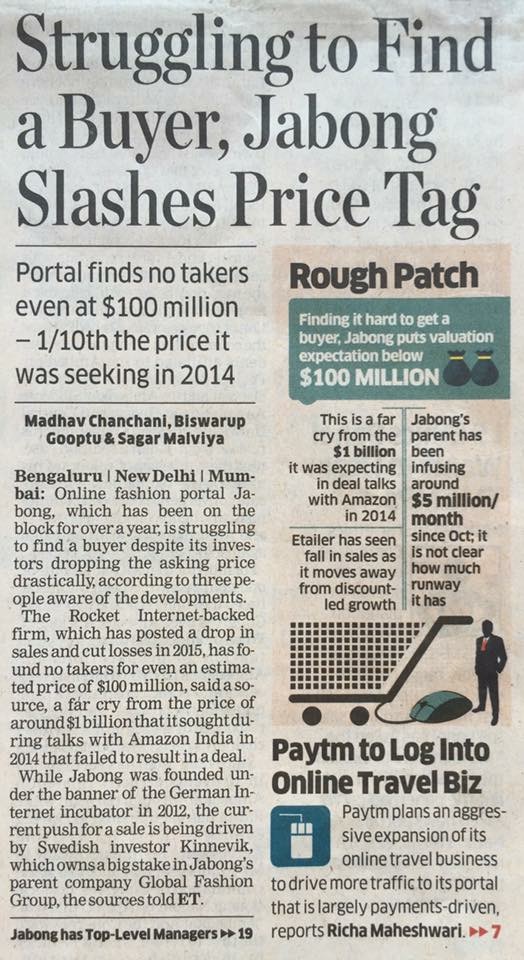
I travelled to check the other players and came across Limeroad.com. The results were :
Losses for the current year ended were double of revenues!
When I looked up their expense ratios:
They were spending over 117 % of their revenues in Advertising and Sales promotion – way beyond Biyani’s mention of 20%.
I guess this was because they were establishing themselves as brand?
Looking for more, I visited Shopclues.com (an online market place). Topline growth again seemed to be scaling only via cash burns:
While there was a lot of Red, what intrigued me was their split of sources of revenues. A huge Rs 23 crores was earned from Advertising and Marketing?
But when I looked deeper, the revenue growth had come from massive advertising & marketing costs!
Sure enough, their ratios were way above 31%! Also, it kind of reminded me of a very old blog post I had written in which the central message was “You can’t earn via advertising by spending on advertising”.
By this time, I was sweating, switched track and asked myself, “Alok, which are the two most Iconic Fashion brands you know of, and how do they perform?”
I live with 3 women – My wife and my 2 daughters, and they in turn LIVE at Zara!
So, I looked up the Zara annual report financials and was pleasantly surprised by the messaging and communication of Zara:
Zara recorded a net profit of 2.8 BILLION EUROS or Rs. 21,000 CRORES! (13.6% on topline) for 2015.
I went deeper into the Zara (Holding Company Inditex) annual report to figure what they were doing and talking about to describe their mind blowing performance. All I read were statements like these:
Zara was only shouting about the number of stores that it had opened across the world to generate new business and accomplish complete domination of the fashion trade!
Even for its sub brands, Zara kept harping about stores and stores and stores:
Given that this discussion is about ‘cost of acquiring users’, I dived straight into the P&L of Zara:
When I dug deep, I found:
Even if we were to assume that half of the “Other Operating Costs” of 1.9 Billion Euros were ‘Advertising & Marketing’, that would translate to 4.7 % of topline revenues of Zara, skewing towards what Biyani had inferred that Retail Brands really don’t spend much on acquiring users.
Honestly, I would imagine that Zara had spent even lesser. I rarely see Zara “ads” anywhere. They market themselves via their consumers who just love to go back to the stores for more and keep buying!
Finally, I went to look up the financials of a brand that I personally live in – Tommy Hilfiger:
Like Zara, there was a lot of mention of the “retail space owned’ and operated by them.
While the P&L did not specify ‘Advertising and Marketing’, it revealed:
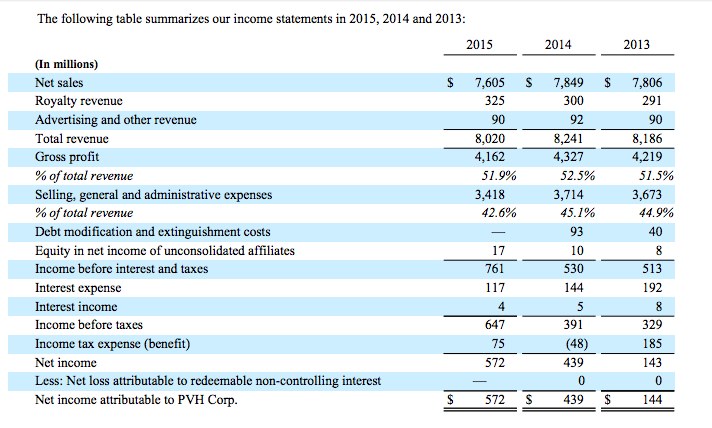
We can safely assume that the broad category of SG & A (Selling, General and Administrative expenses) that constituted 42.6% overall costs to topline, could not have been dominated by advertising and marketing only since the broad description of SG & A costs are very broad including Salaries, rent etc (see Wikipedia reference below)
Conclusion:
– Looks like Biyani is right! Retail Fashion stores really sweat their stores and brands for marketing, ‘inbound traffic’ and rely on their consumers to keep visiting and spreading the word to generate sales.
– If a company like Myntra that currently operates on a negative 48.9% margin has to become ‘reasonably’ profitable – say 15%, it needs to improve its revenues/reduce cost by 74%!! (-49% + 74%) =15%
How can that be possible if large chunky costs % are locked into getting consumers to the online stores in the first place?!
– The smaller and newer brands (Shopclues, Limeroad) are spending disproportionate sums of advertising and marketing vs. revenues to build their brand, salience and consumer reach, but will numbers such as 100%+ of advertising/sales to revenue EVER reduce to a “Biyani normal” of 2-3%?
– Lastly, is the concept of ‘only online’ feasible? Check out this snippet I found in the Wall Street Journal about Zara’s Offline-Online store synergy that explains my point!
****
Added post publishing :
– A couple of comments have pointed out that Zara and big offline Fashion Stores are not strictly comparable to newer online stores and that rental costs should be compared to online marketing costs. But that is my entire point! Zara and Tommy Hilfiger represent SCALE! You can’t get bigger than them. Then why, even in 2015, do they keep investing in retail + stores + people and everything offline? Both these mega brands have all the money and resources to blow up their business online! Why don’t they? If online is infinitely scalable, targetable, operable 24 hours and so personal, what holds these big brands back? Why do they continue to pay ridiculous rents? What does their hesitancy signal? My intrigue is based on this contrarian behavior of these mega brands…
– A person stated that “Zara is a Brand; Myntra is a retailer – so a comparison is not correct”. That’s incorrect – check the number of brands Inditex (holding company of Zara) sells as per the charts above. I have used the Inditex numbers for this study.
– I asked someone “Has anyone scaled online and been successful?” Check out this brilliant retort AND the % of ads spend to sales 🙂
****
A BIG thanks to tofler.in, WSJ, The Mint and the ET for the rich data they provide.
Updated : 29th June
I was amazed to read this headline in the Economic Times a couple of days ago. Proves that offline seems to be working …
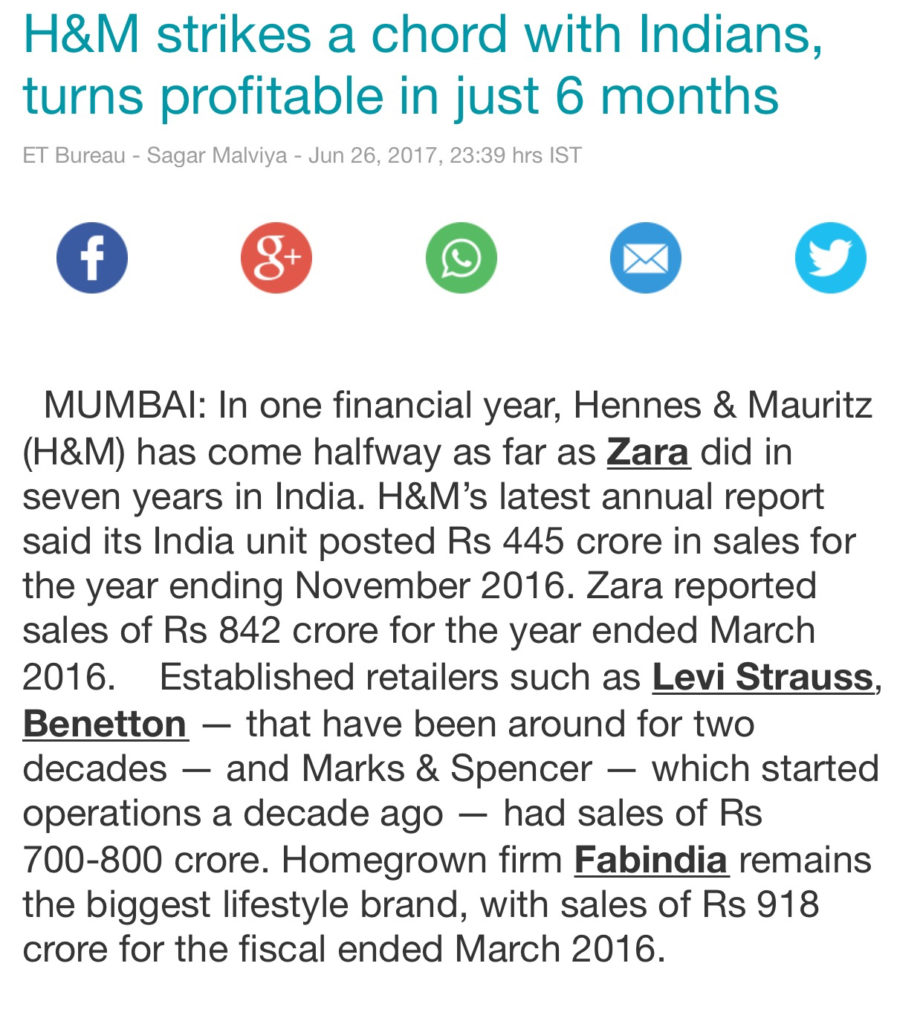
Updated : 14th November 2017 : The beggining of the end?
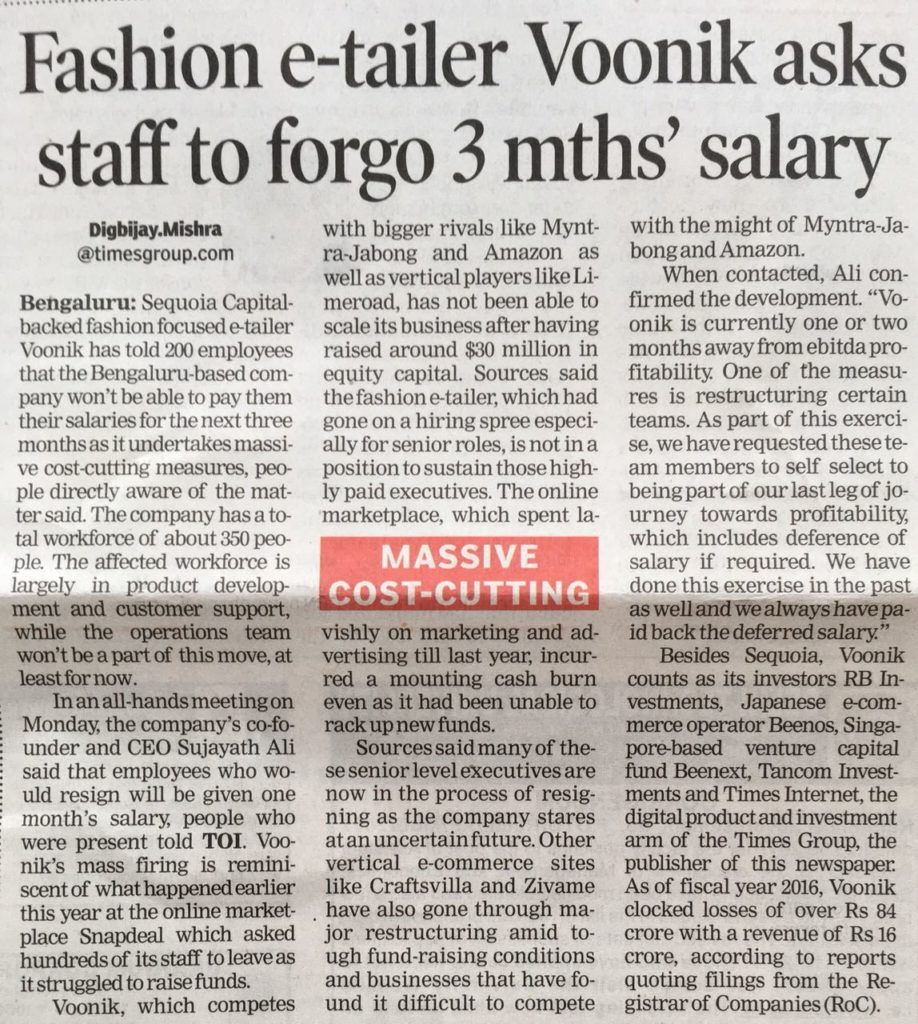
Updated : 23rd November 2017 – VCs finally ‘give up’ – https://bit.ly/rodin-et
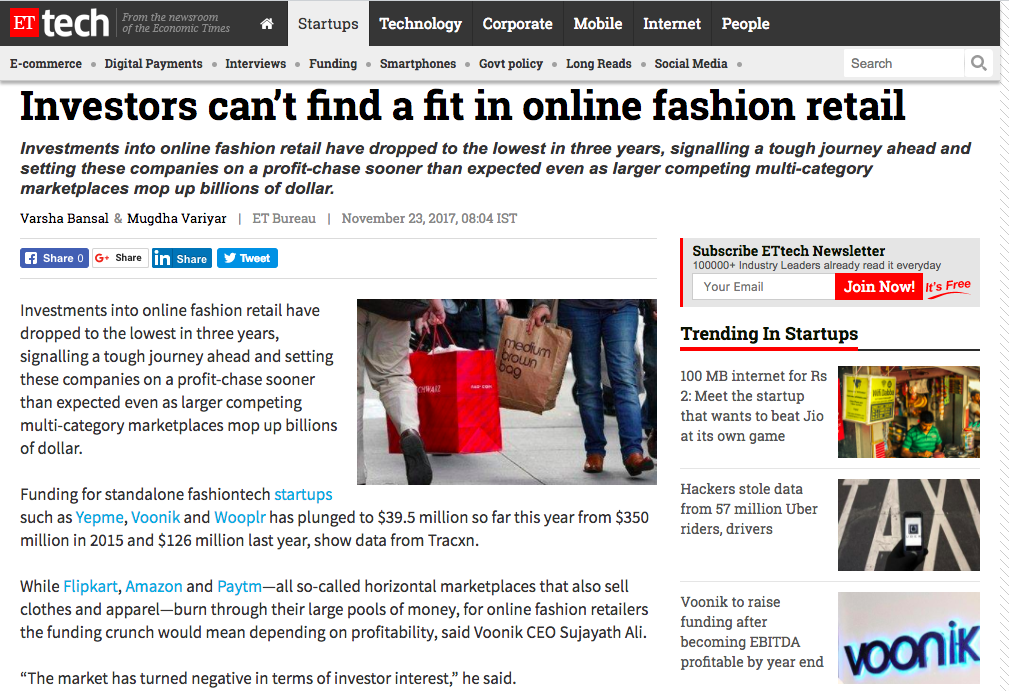
******

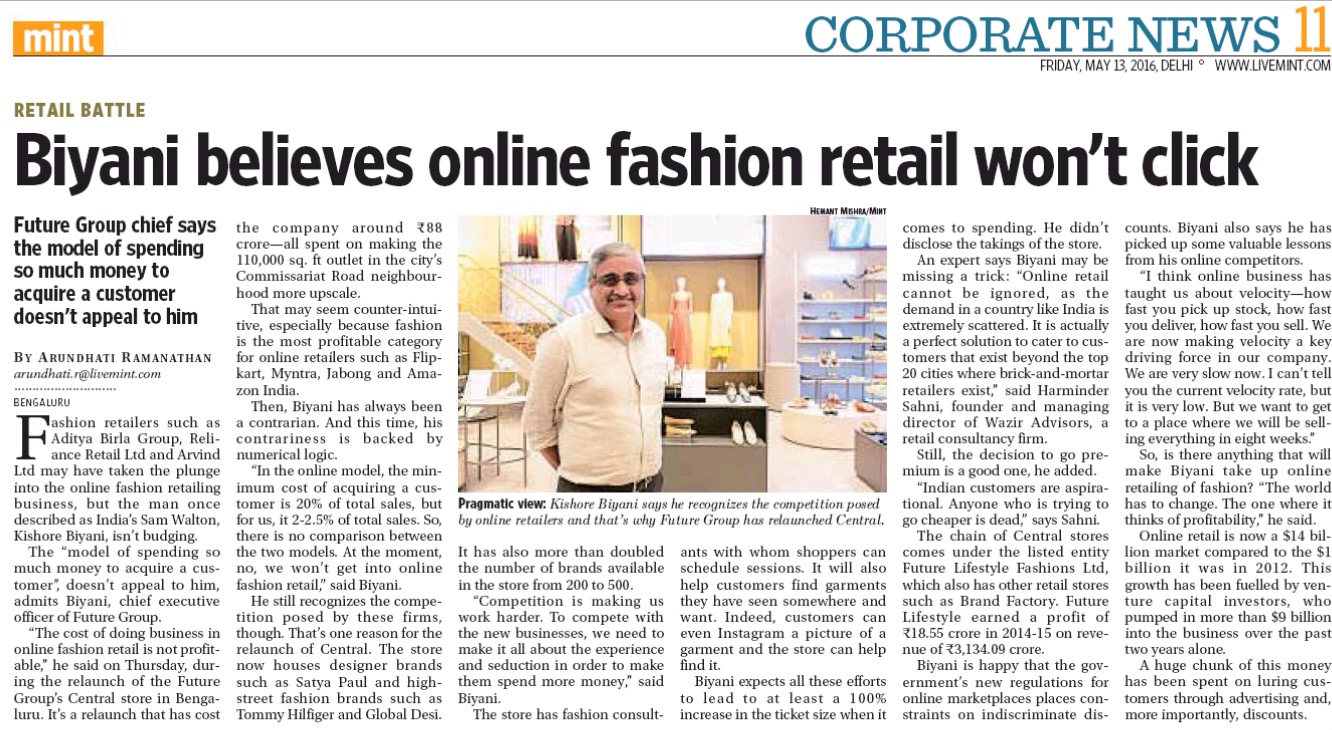
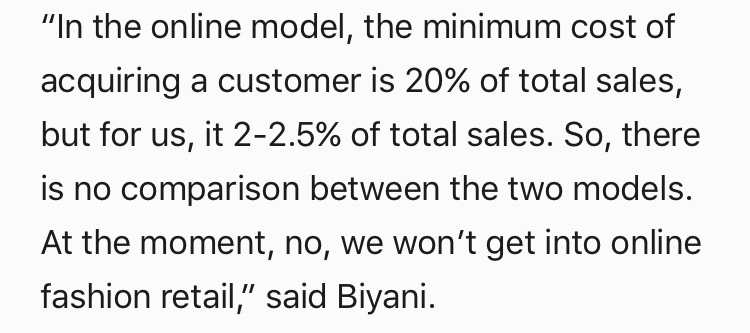
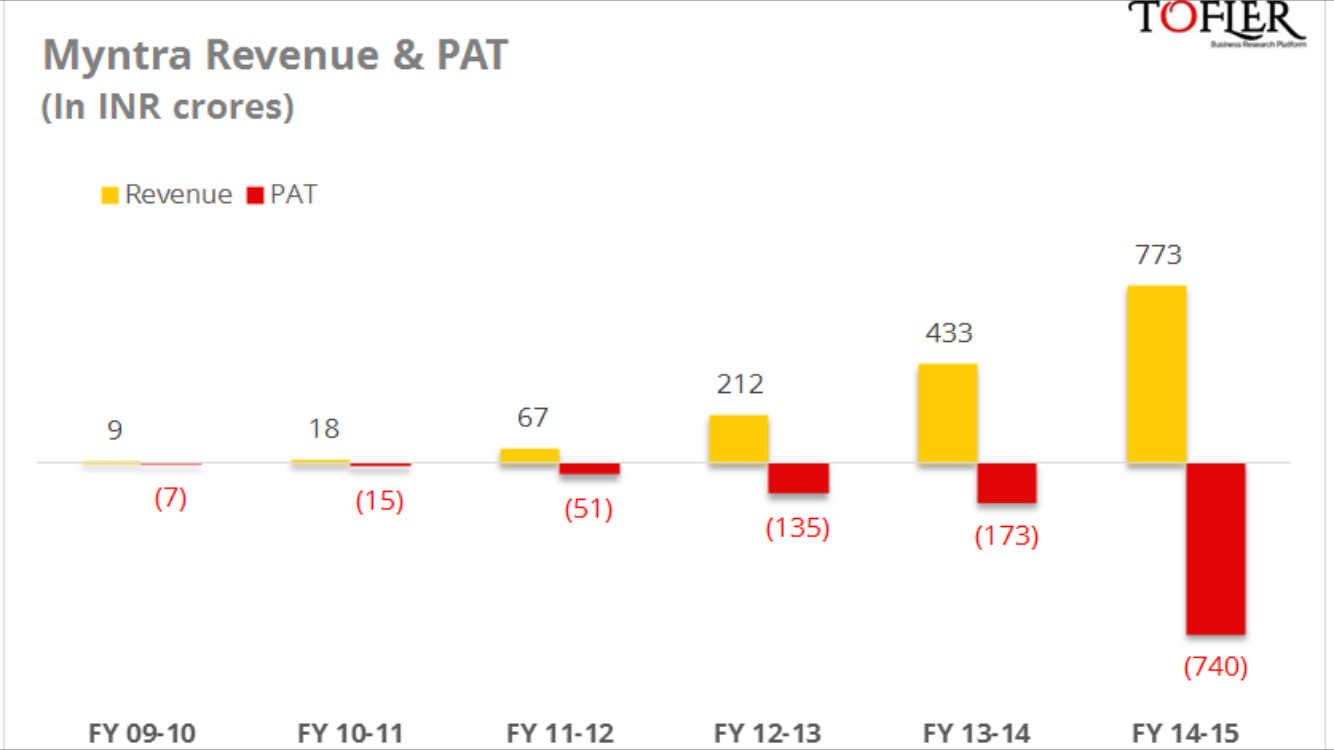
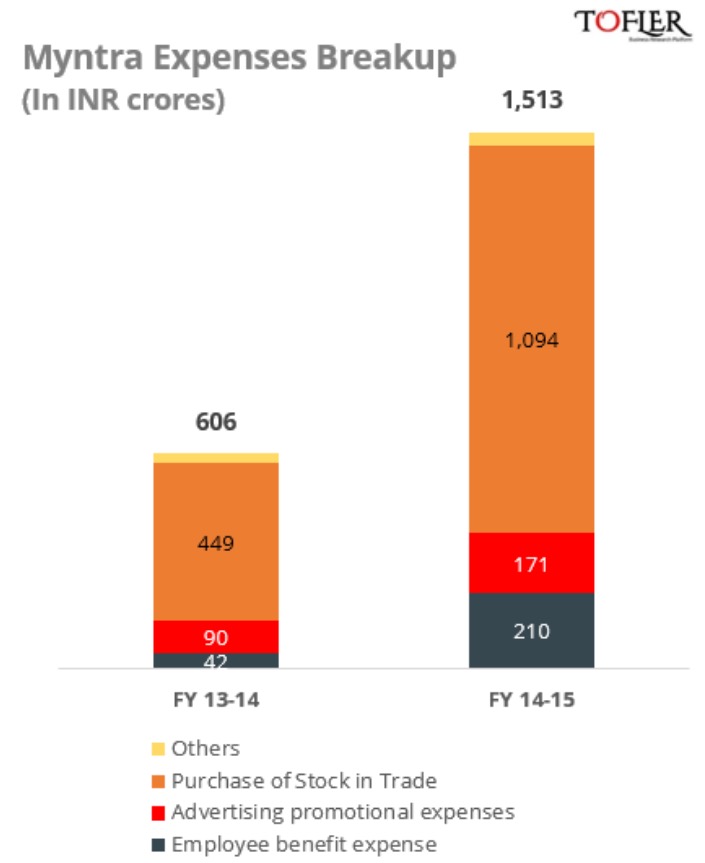
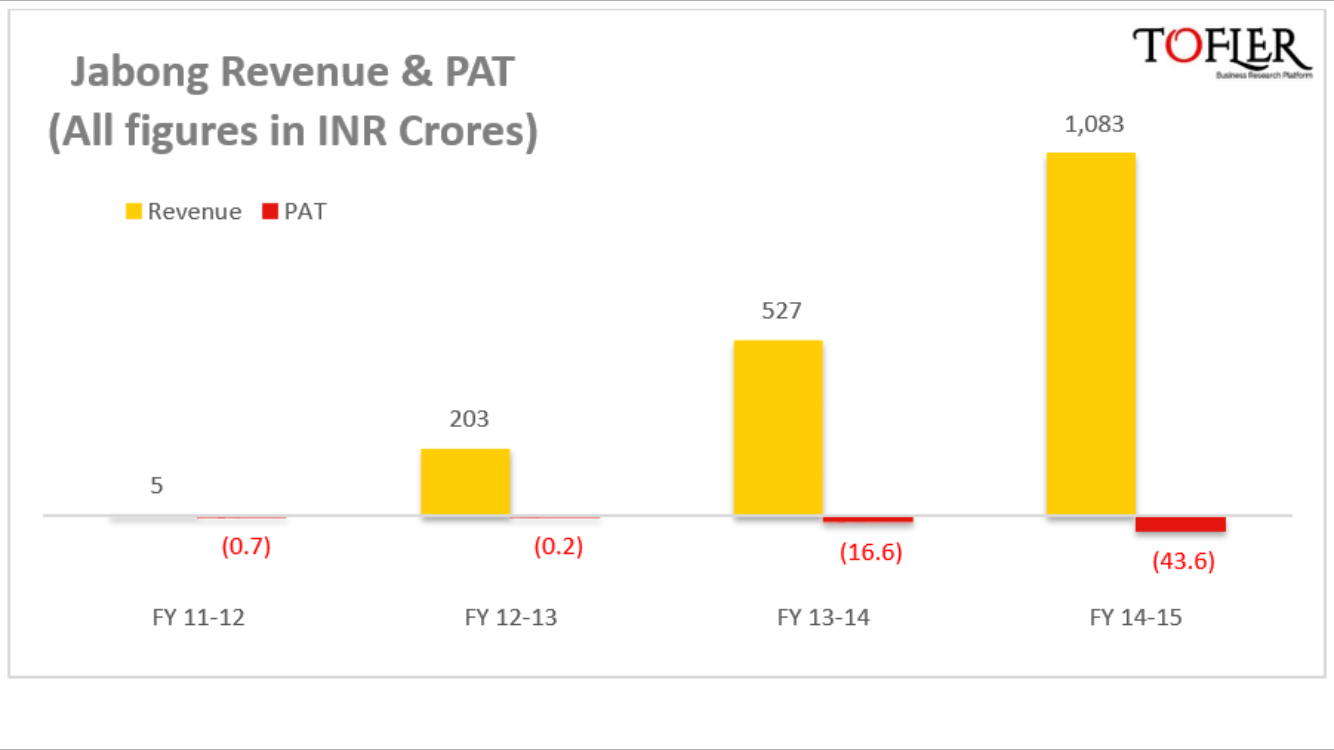
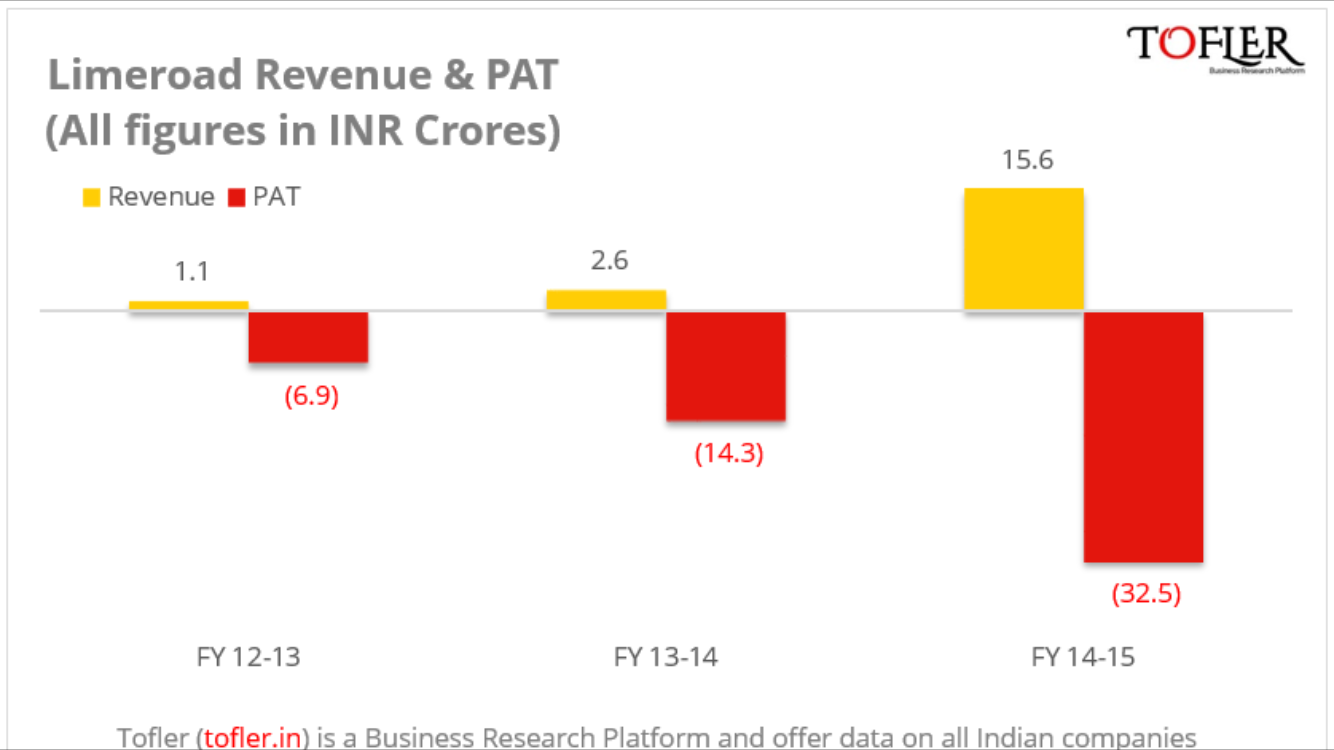
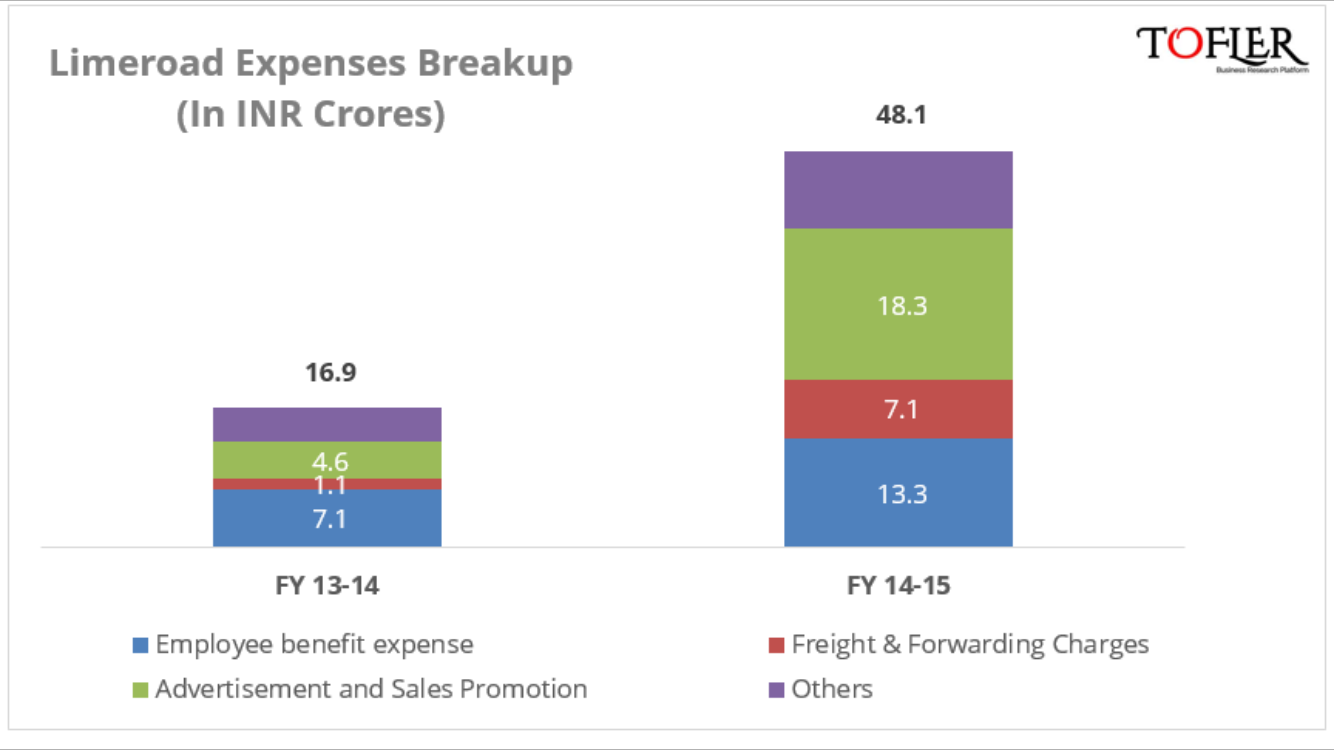
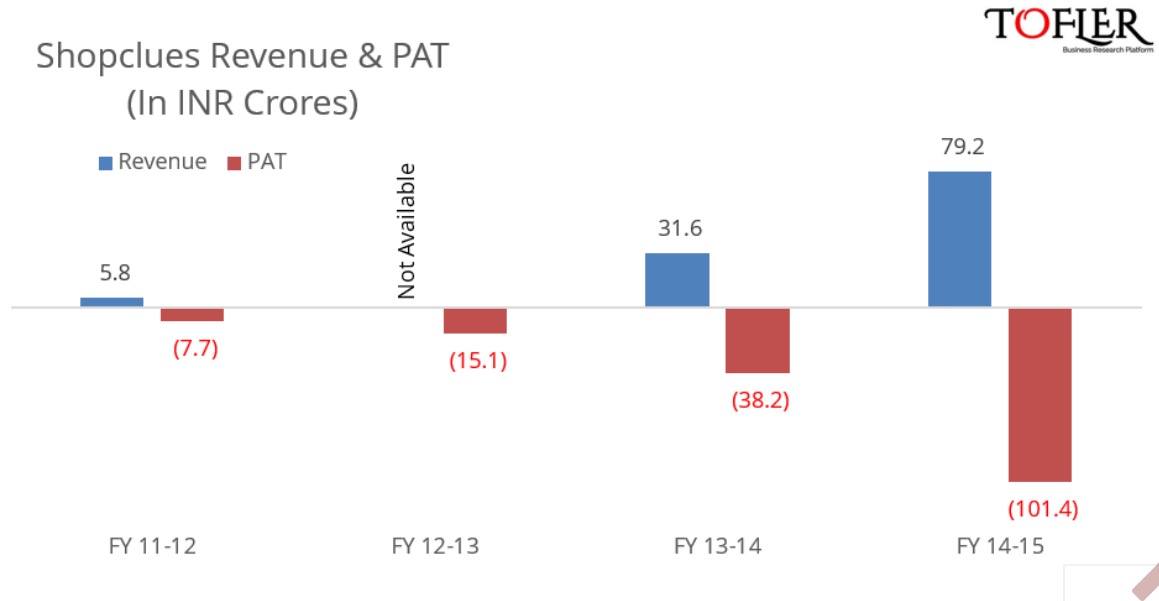
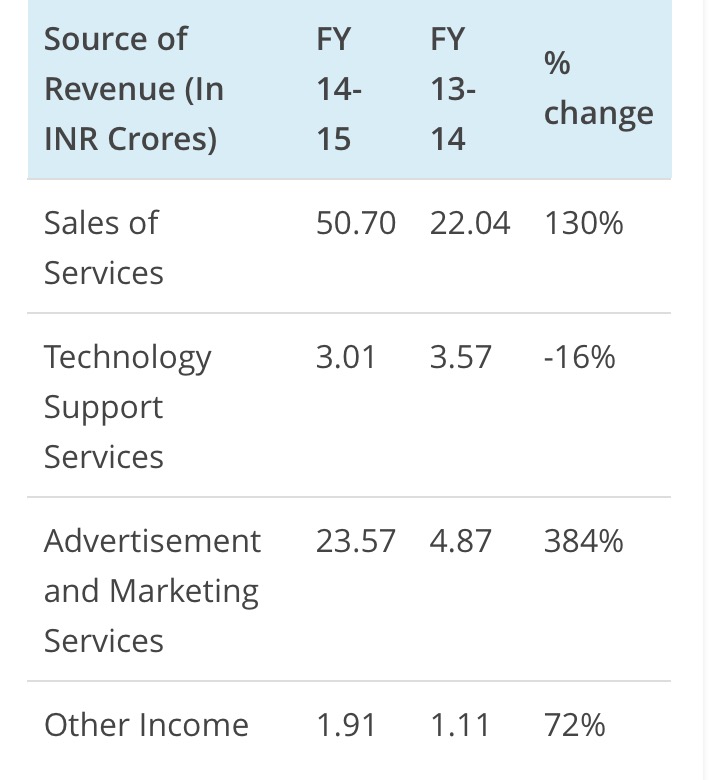
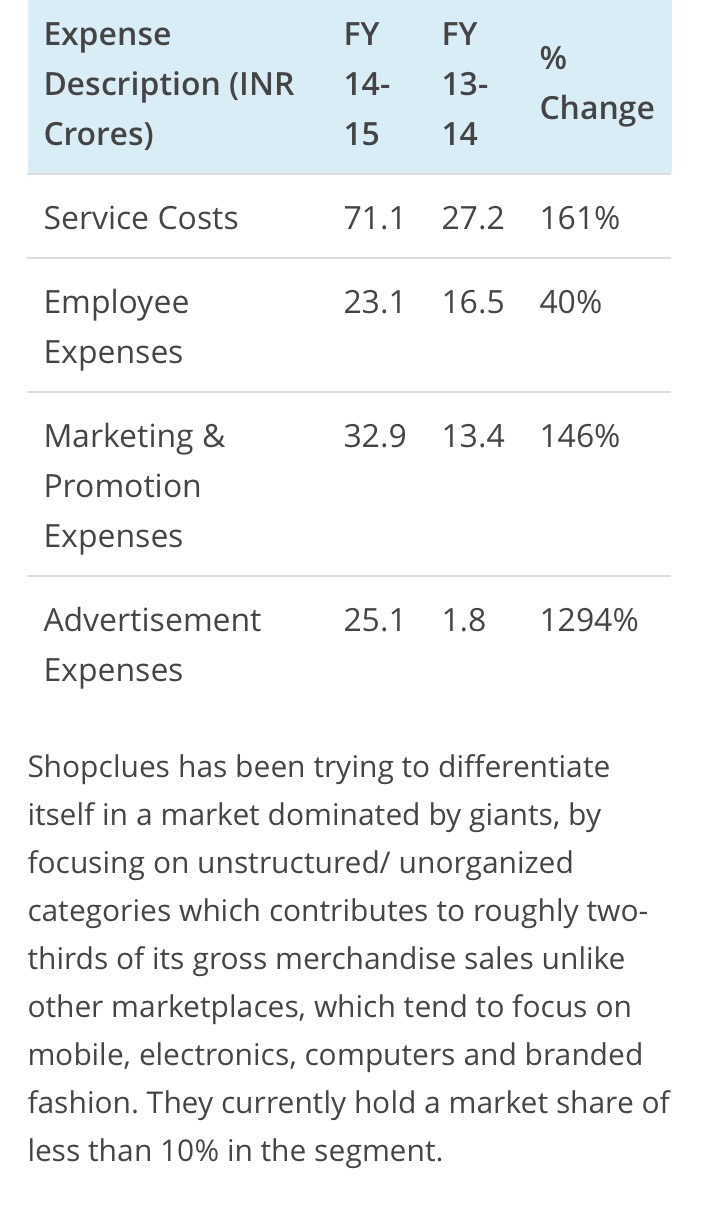
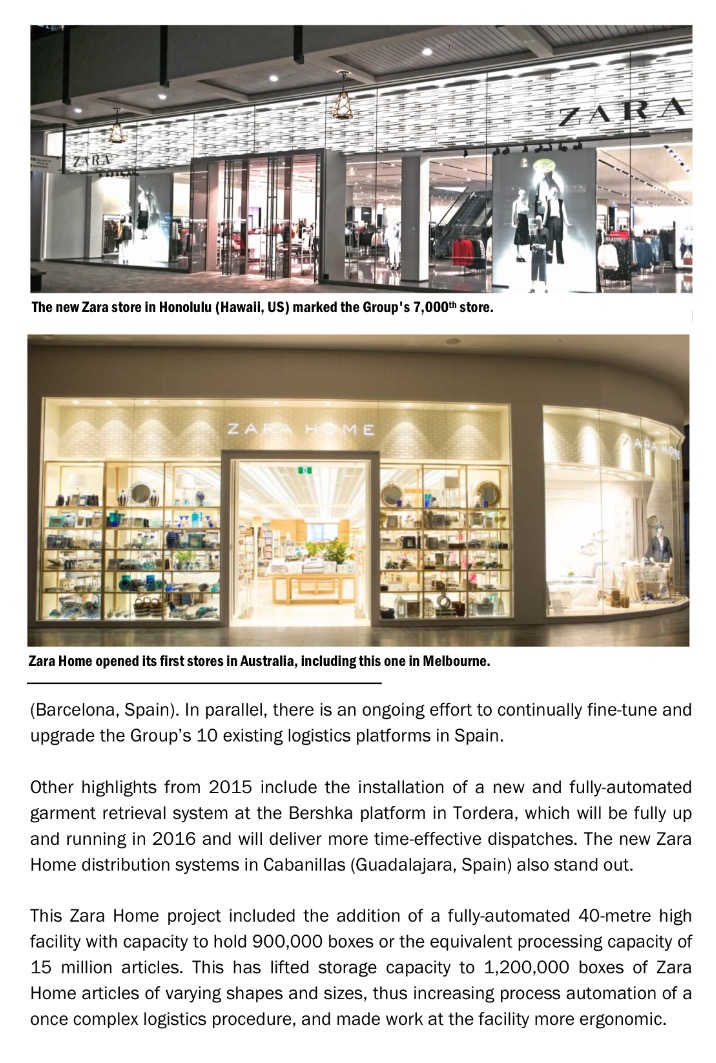
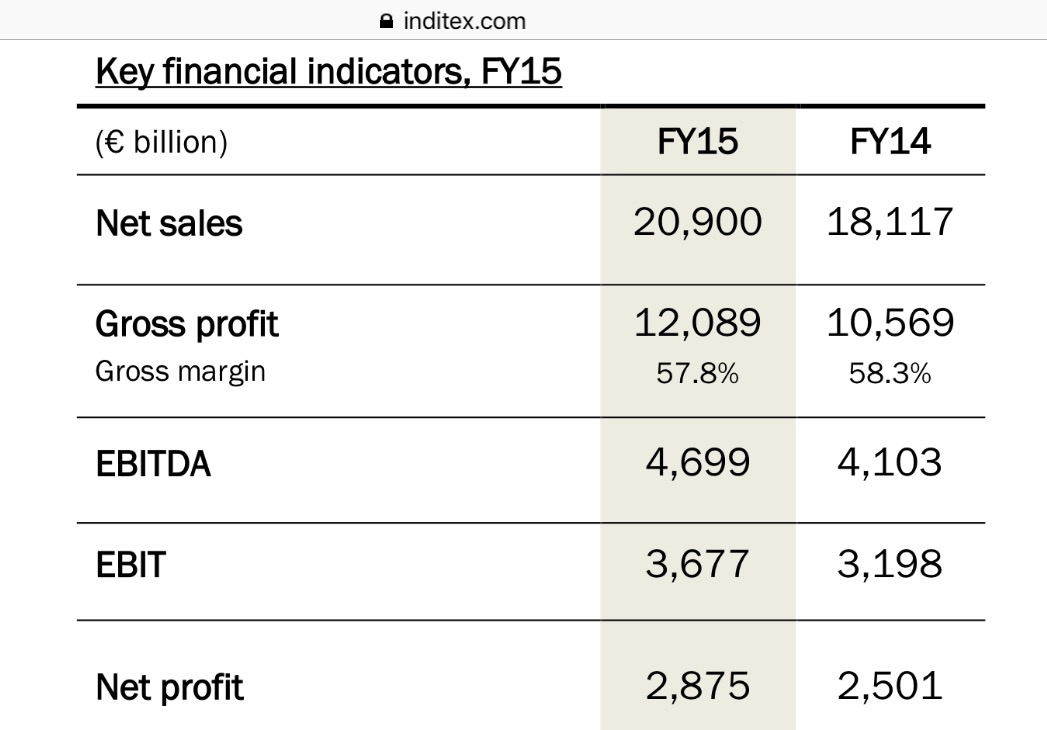
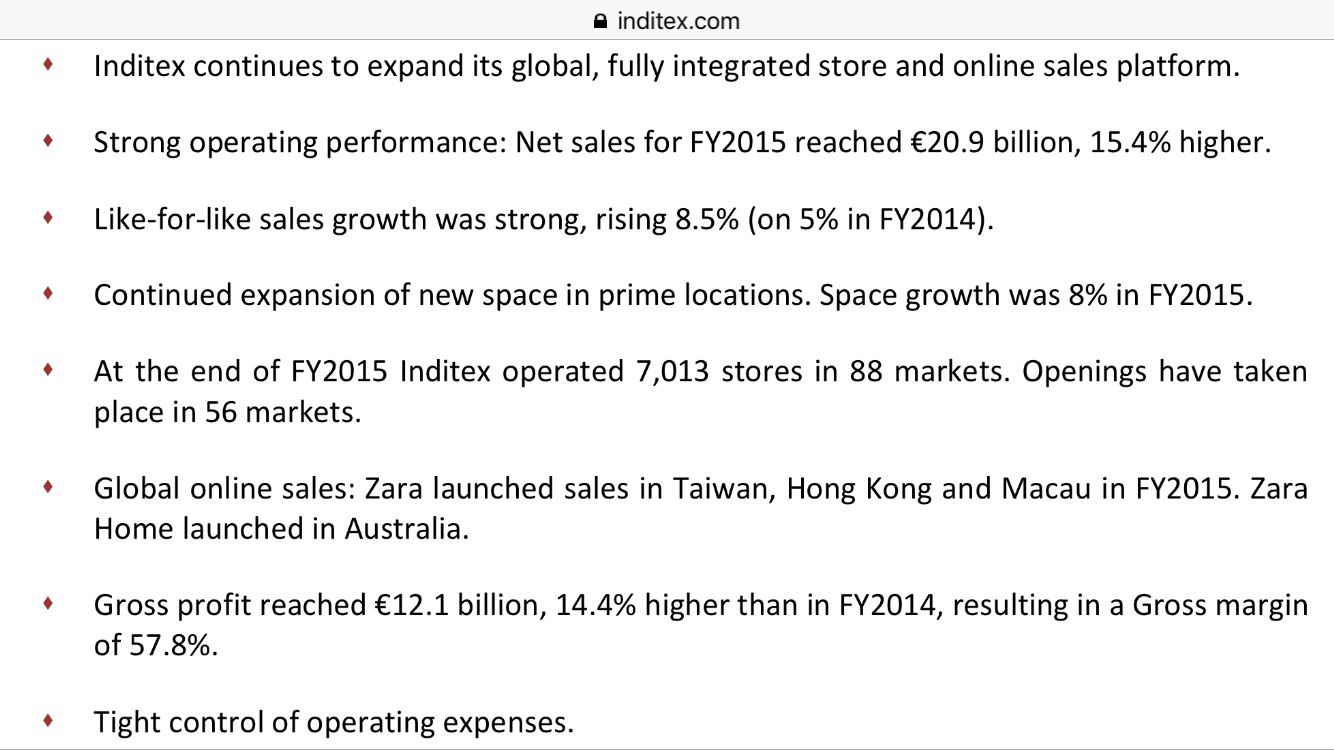

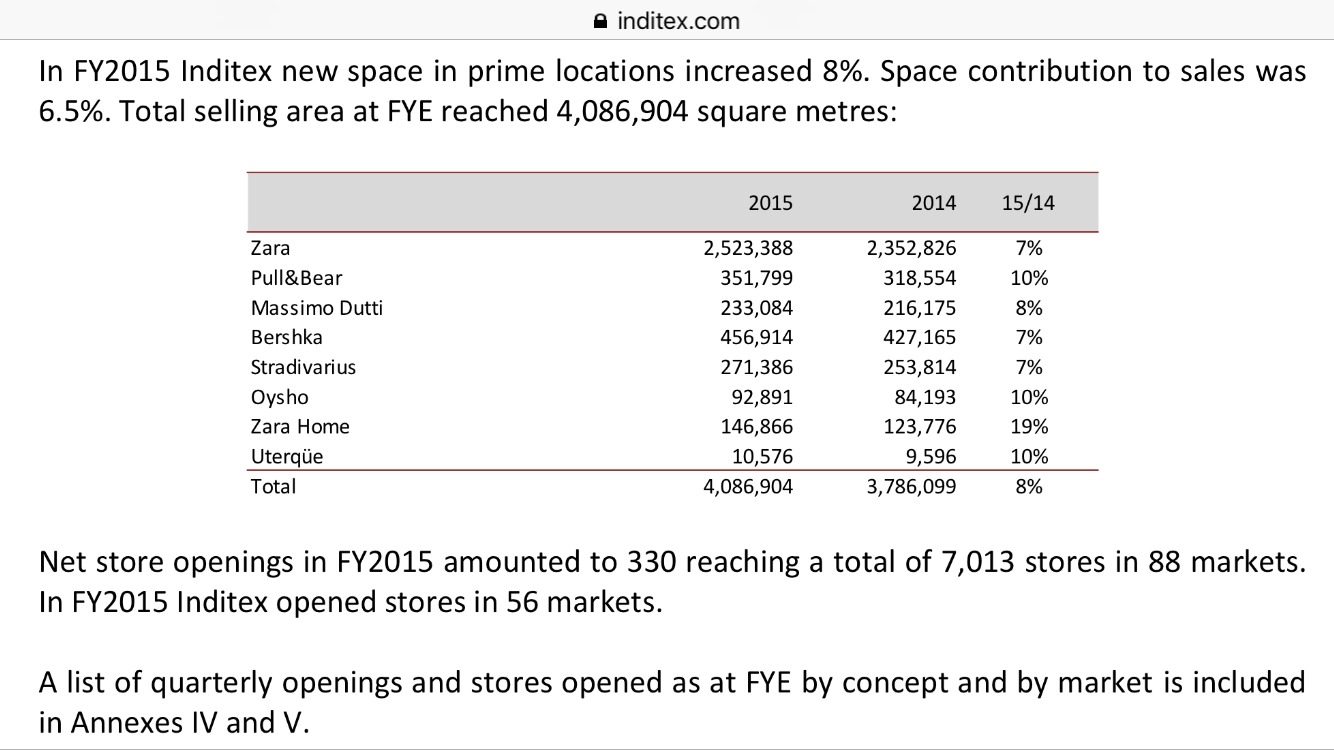
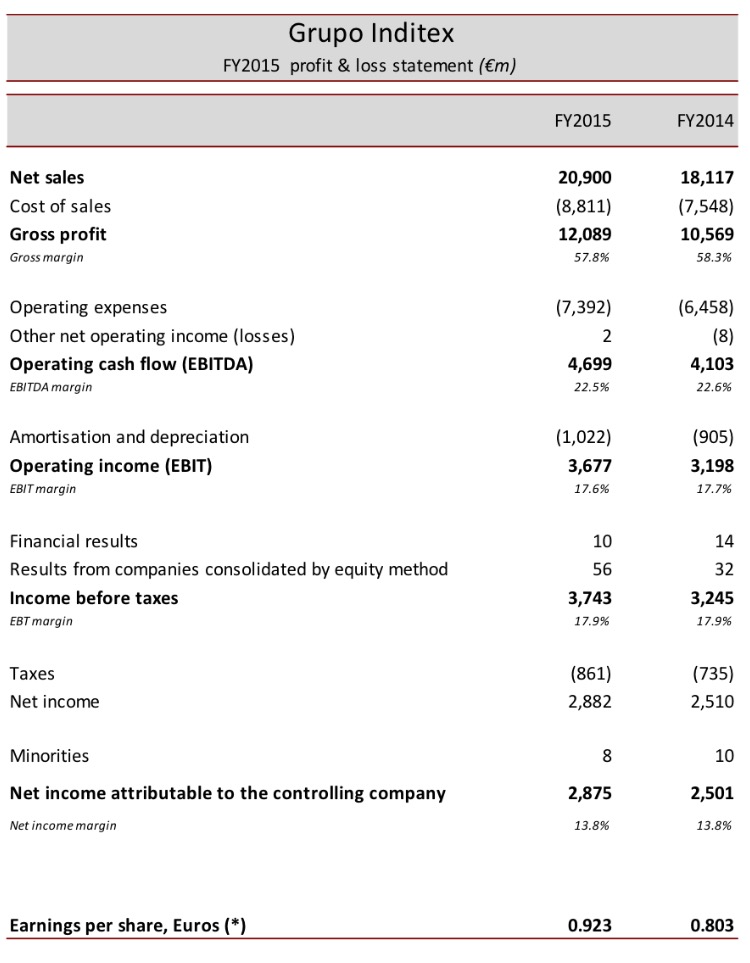
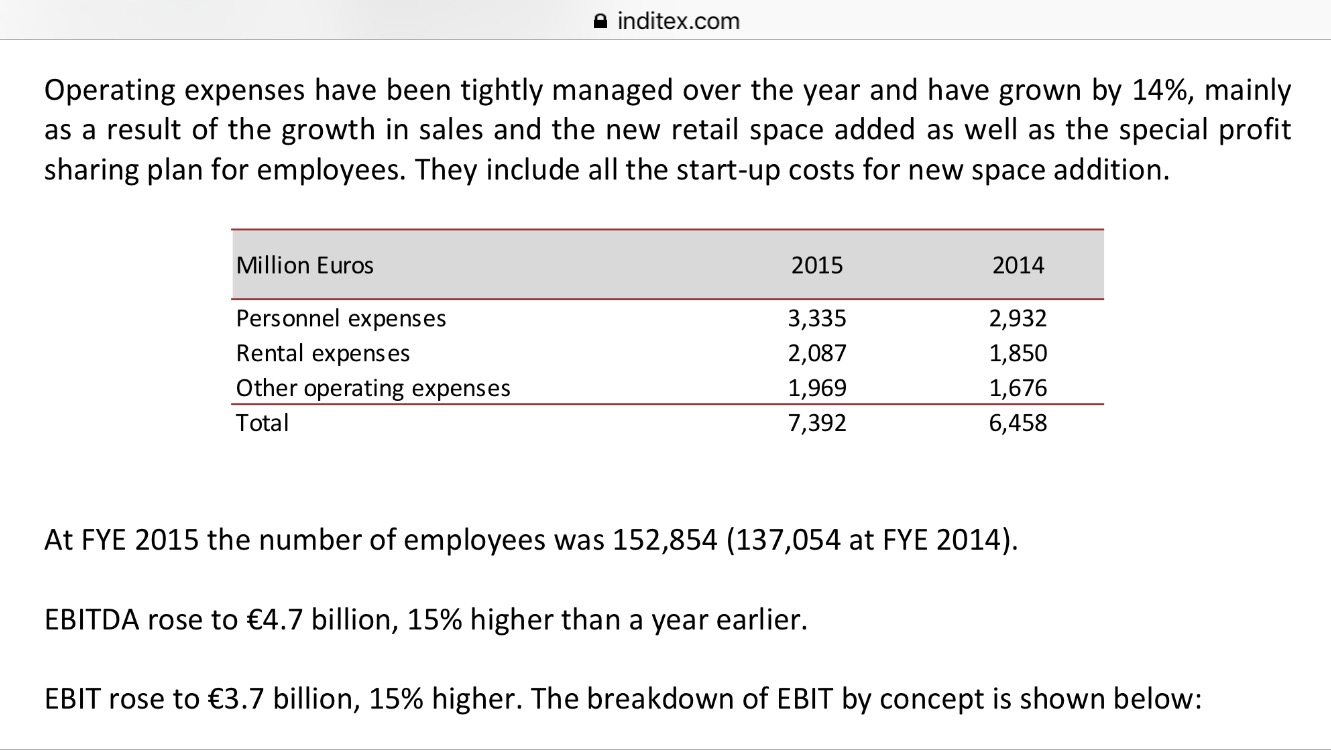
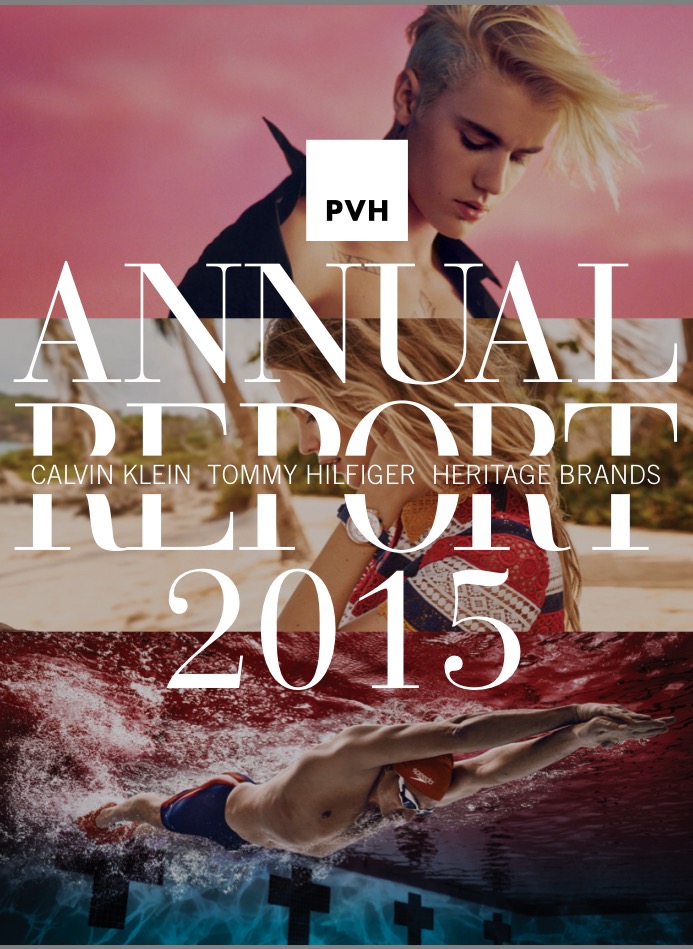
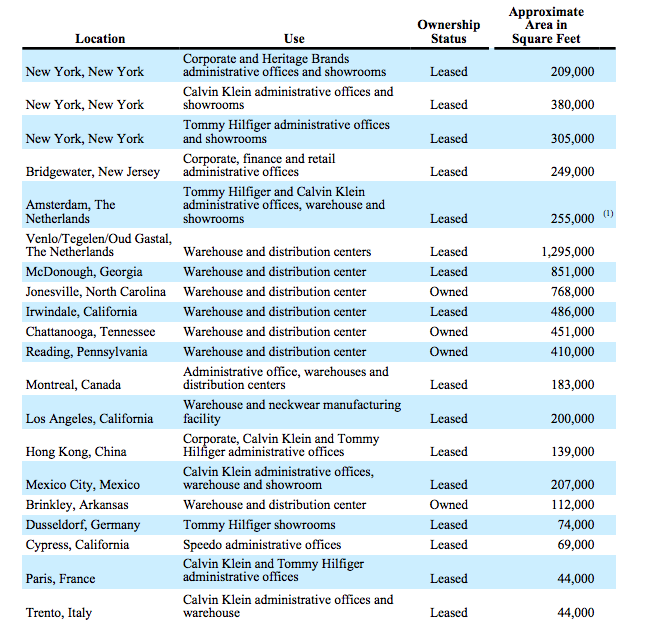

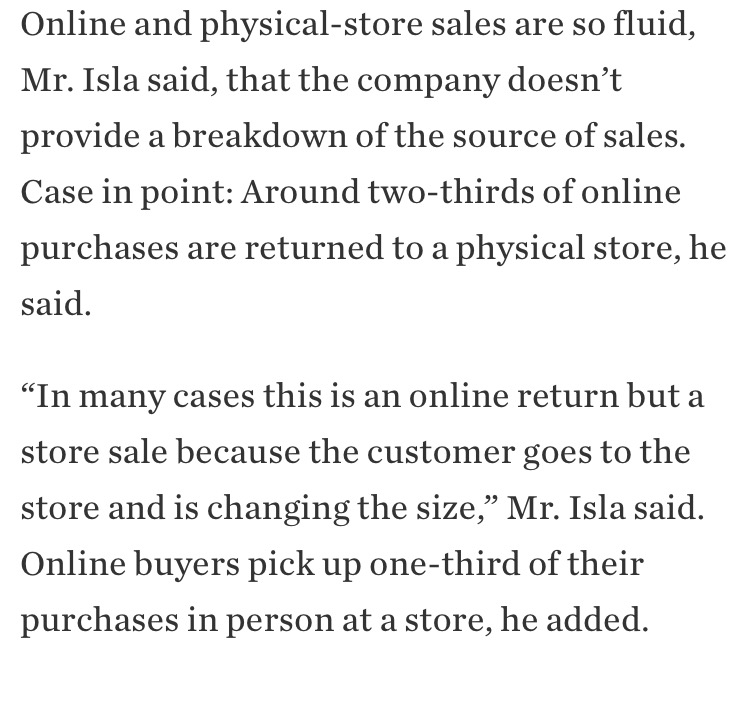
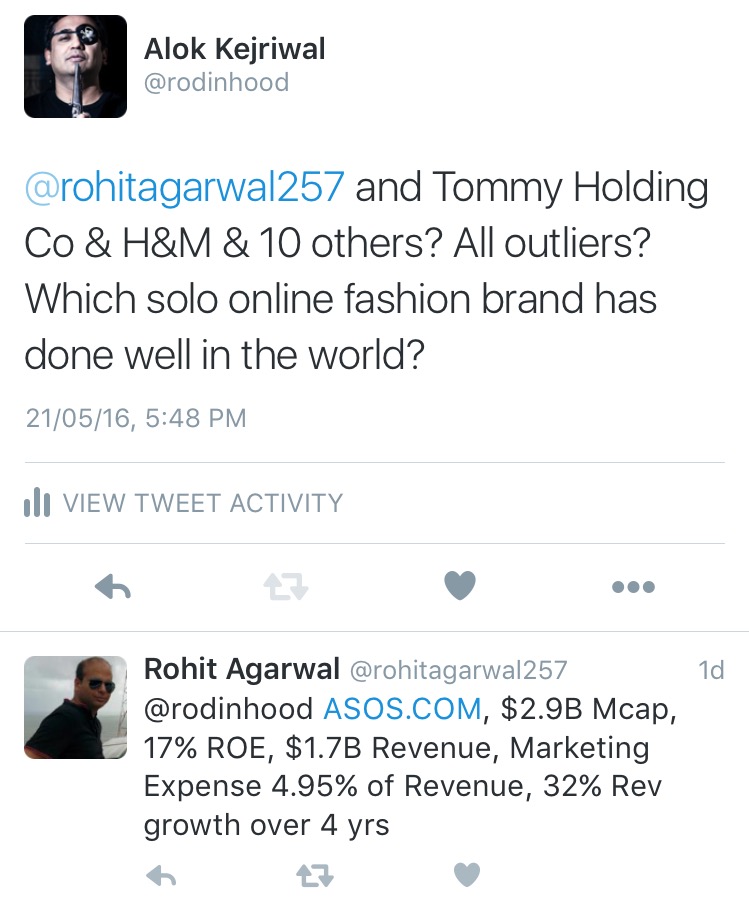




Tejpratap Singh
The problem with online fashion industry is there are few customers and more of buyer. What I mean by buyer is a random person looking at your add and buying and customer is who finds you to buy the product and is repeat purchaser atleast 3 times in 3 months. Indian fashion industry is still not a matured we are working on booking basis exactly opposit of Zara who gives new product every 7-15days. If this continues our market will be taken over for the international players soon.
Pranay Sanghavi
I love reading articles by Alok, not mere number crunching but loaded with wisdom and insights.
Where can I have all of them at one place – any RSS or OPML / blog list available for reading on my Kindle?
asha chaudhry
pranay – there is a TAB on the homepage called Alok’s Posts
Puneet Nirogam Aggarwal
Excellent article and valuable insights !
Thank you Alok Sir, once again for imparting clarity.
Sorbojeet Chatterjee
Fabulous read Alok. Besides, the insights – can’t help admire the diligence to get all data and connect the dots magically.
My 2 bits
– While marketing cost for the offline model would be around 2 – 2.5% – It might be prudent to add the rental in this field. Online saves rental cost and probably ploughs it back to marketing. Besides, a snazzy highstreet facing store does play the role of marketing the outlet
– Offline models also have the option of Franchising…Helps scale up, mitigate risk etc…Worth ideating on whether there exists a parallel for online players to find a franchise equivalent
Jitesh
Enjoyed the article!
E-tailers from the beginning deliver value via discounts and made a perception in consumers mind “Need discounts, come online”. This perceived value is so entrenched in Indian consumer mind that it will take years & efforts to change the mindset to buy online for convenience. IMO, consumers will increasingly buy standardised products which does not need look and feel like – small electronics, accessories, cosmetics, online booking-offline services, Community (suggestion) based buying etc.
Bala Satish G
Thanks Alok for composing a beautiful read.
Saurabh Bhatnagar
Hey Alok,
Awesome study. I have some insights too.
I am the Digital Marketing consultant of an eCom Brand – TSX
TSX is already a 100cr company – ONLY BY SELLING AT MARKETPLACES.
That’s when they decided to sell on their own Website, that’s when I joined them 4 months ago. Currently we are doing approximately 100 Products per day, with Advertisement returns equal to 1000-1500%.
Let me break it. 1st month – 30 Products per day. 2nd Month – 50, 3rd – 70. Now 4th – 100 per day.
So I am slowly increasing the Ad budgets, while doing testing side by side.
Yes, we are far far far off, if we talk about the figures that were discussed in this article.
But still, Profits of few Lakhs is still better than Losses of Crores.
(Though I will admit that we are secured from one part, that is by having a good customer base from the marketplaces.)